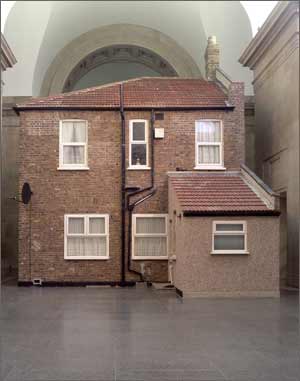Oscar Wilde remarked that the British “are always talking about the weather and forever meaning something else.” It might be said that British artists are always painting gardens and meaning something else – turning to the shrubbery, so to speak, when they want to address the deeper and more urgent things in life. That at least appears to be the thesis behind Tate Britain’s summer exhibition, “Art of the Garden: The Garden in British Art from 1800 to the Present Day”; although cynics may feel that a desire to entice the Chelsea Flower Show crowd into the gallery, boosting attendance figures and achieving what marketing types call a “crossover audience”, may also have helped to propagate this particular curatorial seedling.
Like many a thematic exhibition, “Art of the Garden” seeks to disguise the ragbag nature of its contents by subsuming them into categories, each with a neatly capitalised title. Its first section is “Thresholds and Prospects”, which turns out to be a lush but distinctly ill-kept herbacious border of an arrangement, prize blooms spilling out at all angles in defiance of any particular plan or scheme. Two small pictures painted by John Constable from the windows of the house where he grew up in East Bergholt, Suffolk, hang on the wall immediately inside the entrance to the show. One shows his mother’s flower garden, the other a broader, more panoramic view of the canalised landscape of the Stour Valley, which the artist’s father, the miller and landowner Golding Constable, had spent much of his lifetime cultivating (and the revenues from which allowed Constable to pursue the unprofitable career of a landscape painter). The paintings are a grateful son’s tributes to his parents but they are coloured too by morbidity and frustration. Shadows lengthen over the flower garden, shown unpeopled presumably...

The Art of the Garden; Michael Landy’s Semi-Detached, two exhibitions at Tate Britain 2004
06-06-2004

